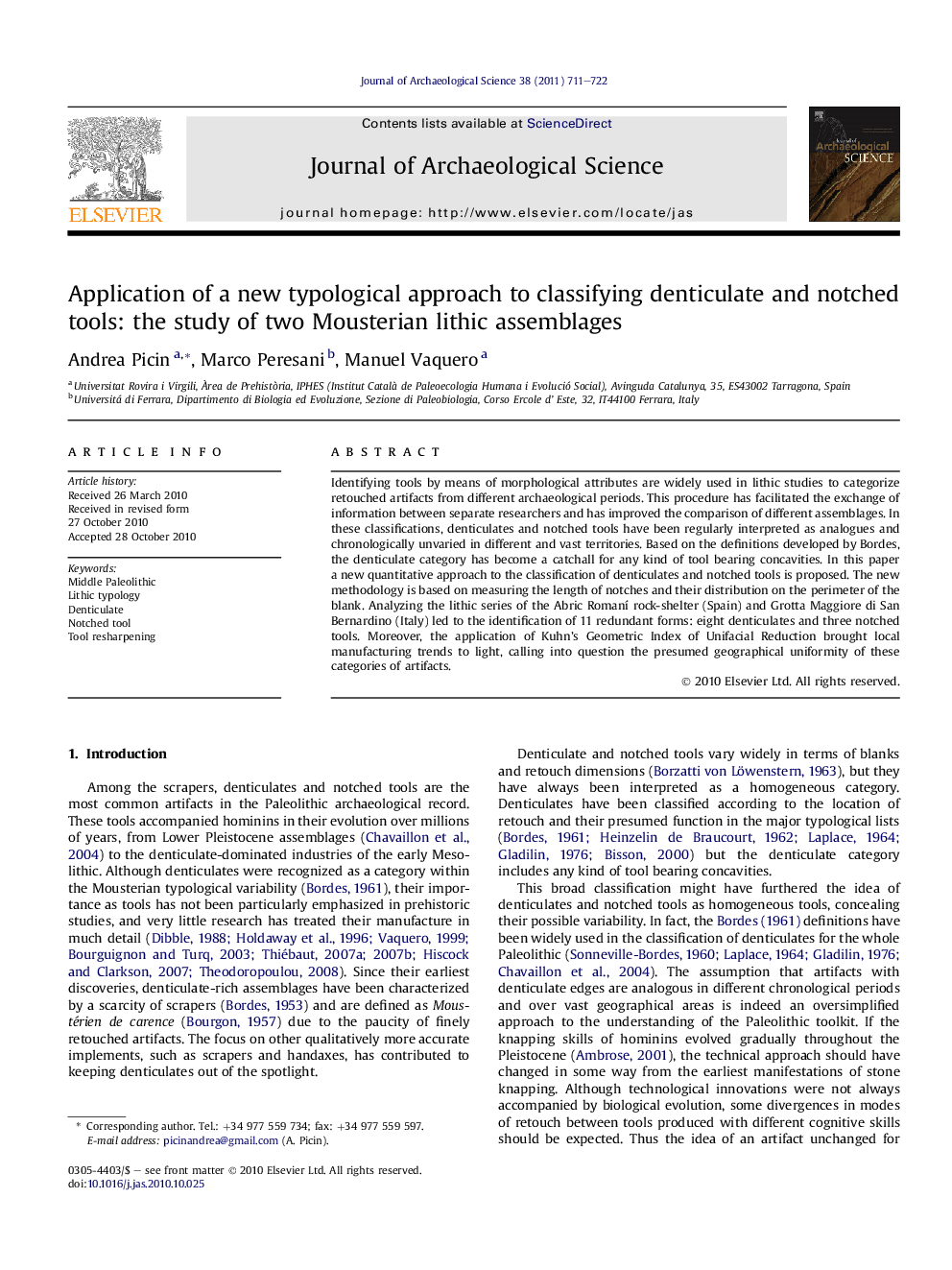| Article ID | Journal | Published Year | Pages | File Type |
|---|---|---|---|---|
| 1036131 | Journal of Archaeological Science | 2011 | 12 Pages |
Identifying tools by means of morphological attributes are widely used in lithic studies to categorize retouched artifacts from different archaeological periods. This procedure has facilitated the exchange of information between separate researchers and has improved the comparison of different assemblages. In these classifications, denticulates and notched tools have been regularly interpreted as analogues and chronologically unvaried in different and vast territories. Based on the definitions developed by Bordes, the denticulate category has become a catchall for any kind of tool bearing concavities. In this paper a new quantitative approach to the classification of denticulates and notched tools is proposed. The new methodology is based on measuring the length of notches and their distribution on the perimeter of the blank. Analyzing the lithic series of the Abric Romaní rock-shelter (Spain) and Grotta Maggiore di San Bernardino (Italy) led to the identification of 11 redundant forms: eight denticulates and three notched tools. Moreover, the application of Kuhn’s Geometric Index of Unifacial Reduction brought local manufacturing trends to light, calling into question the presumed geographical uniformity of these categories of artifacts.
Research highlights► In this paper a new quantitative approach to the classification of denticulates and notched tools is proposed. The new methodology is based on measuring the length of notches and their distribution on the perimeter of the blank. ► The analyses led to the identification of 11 redundant forms: eight denticulates and three notched tools. ► The application of Kuhn's GIUR brought local manufacturing trends to light, calling into question the presumed geographical uniformity of these categories of artifacts.
